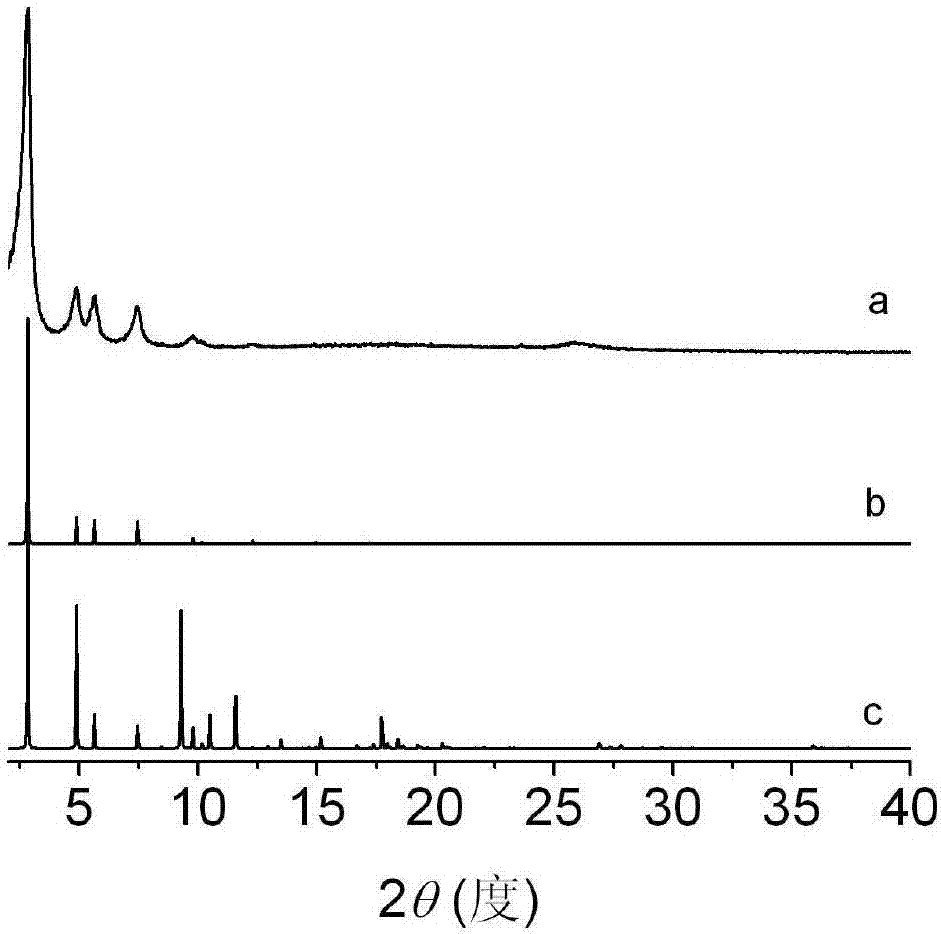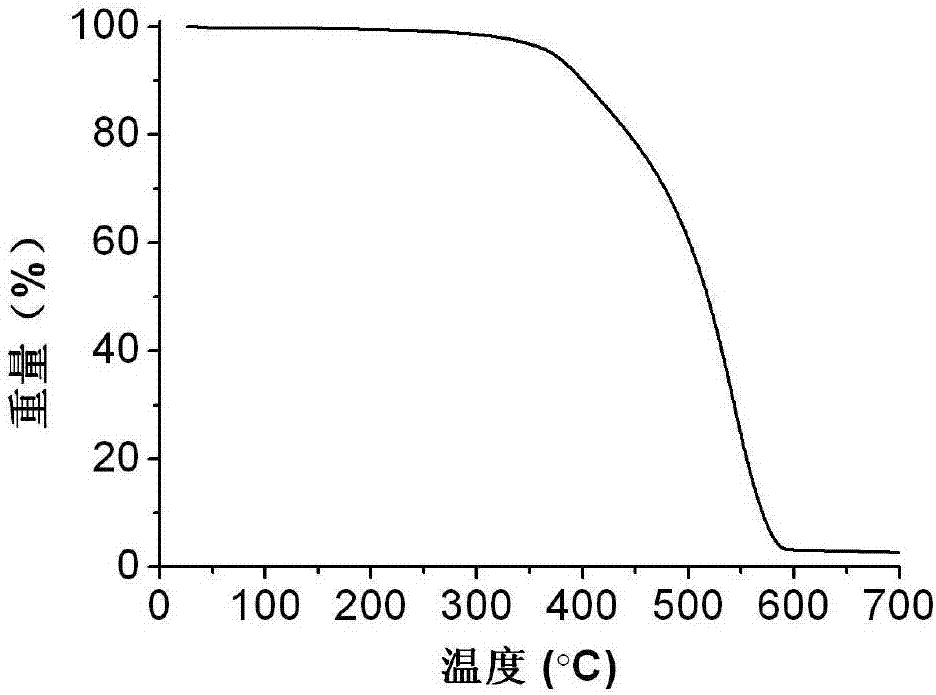Preparation method of covalence organic framework material for detecting trace water in organic solvent
A covalent organic framework, organic solvent technology, applied in material excitation analysis, fluorescence/phosphorescence, etc., can solve the problems of cumbersome and time-consuming operation, in the initial stage, lack of materials, etc., to achieve stable fluorescence performance, high crystallinity, high The effect of sensitivity
- Summary
- Abstract
- Description
- Claims
- Application Information
AI Technical Summary
Problems solved by technology
Method used
Image
Examples
Embodiment 1
[0016] A method for preparing a covalent organic framework material for detecting trace amounts of water in an organic solvent is prepared by a solvothermal method, and the steps are as follows:
[0017] 1) Mix 21.6mg 1,4-dihydroxyterephthalaldehyde, 31.9mg 2,4,6-tris(4-aminophenyl)-1,3,5-triazine, 0.2mL 6M acetic acid, 1.8mL o Dichlorobenzene and 0.2mL N,N-diethylacetamide were mixed in a Schlenk tube, and ultrasonicated for 5 minutes to obtain a uniform reaction solution;
[0018] 2) React the above-mentioned reaction tube containing the reaction solution at 120°C for 3 days, centrifuge at 10,000rpm to collect the final red solid, wash the separated solid with tetrahydrofuran and dichloromethane alternately for 3 times, and then wash with dichloromethane Soak for 1d, and finally dry at 100°C and -0.1MPa vacuum for 24h to prepare a covalent organic framework material with a yield of 88%.
[0019] figure 1 The powder X-ray diffraction patterns of the prepared covalent organi...
Embodiment 2
[0024] A method for preparing a covalent organic framework material for detecting trace amounts of water in an organic solvent, prepared by a solvothermal method, the steps and method are basically the same as in Example 1, except that the ratio of the reaction solvent in Step 1 is 1.4 mL o-dichlorobenzene and 0.6mL N,N-diethylacetamide, the characterization results of the prepared nanomaterials are similar to those in Example 1. The yield of TzDa obtained was 75%.
Embodiment 3
[0026] A method for preparing a covalent organic framework material for detecting trace amounts of water in an organic solvent, prepared by a solvothermal method, the steps and method are basically the same as in Example 1, except that the proportion of the reaction solvent in Step 1 is 1 mL o-dichlorobenzene and 1 mL N,N-diethylacetamide, the characterization results of the prepared nanomaterials are similar to those in Example 1, and the yield of TzDa obtained is 60%.
PUM
| Property | Measurement | Unit |
|---|---|---|
| thermal stability | aaaaa | aaaaa |
Abstract
Description
Claims
Application Information
 Login to View More
Login to View More - R&D
- Intellectual Property
- Life Sciences
- Materials
- Tech Scout
- Unparalleled Data Quality
- Higher Quality Content
- 60% Fewer Hallucinations
Browse by: Latest US Patents, China's latest patents, Technical Efficacy Thesaurus, Application Domain, Technology Topic, Popular Technical Reports.
© 2025 PatSnap. All rights reserved.Legal|Privacy policy|Modern Slavery Act Transparency Statement|Sitemap|About US| Contact US: help@patsnap.com



